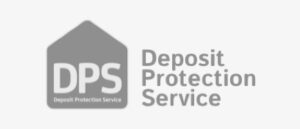
What Is Conveyancing?
Conveyancing is the legal process of transferring a property from the seller to the buyer. It begins when your offer on a property is accepted and ends when you receive the keys to your new home. Along the way, the conveyancing process will ensure:
- You obtain a valid legal title to the property
- Any legal, financial, or structural issues are addressed
- All conditions of the purchase agreement are fulfilled
In short, conveyancing provides the legal foundation for a smooth and secure transaction.
Who Handles Conveyancing?
Conveyancing is typically managed by solicitors or licensed conveyancers. Both are qualified professionals, but solicitors may offer a broader range of legal services. Some buyers may consider handling the conveyancing process themselves however it is often a complex process and doing it without professional help poses a number of risks. Unless you are qualified we would highly advise against this.
Mirrors are also excellent for amplifying light and making rooms appear larger. Placing mirrors opposite windows or light sources will reflect and diffuse light throughout the space making the room seem much larger.
The Conveyancing Process: A Step-by-Step Guide
The conveyancing journey can be broken down into three key stages: pre-contract, exchange of contracts and completion.
Pre-Contract Stage
This will be where your solicitor or conveyancer lays the groundwork:
- Instruction: After your offer is accepted, you formally appoint a solicitor or conveyancer to act on your behalf. They will then provide a breakdown of fees, such as their services as well as any other additional costs.
- Draft Contract: The seller’s solicitor will prepare a draft contract and share it along with relevant documents, such as the title deeds and a fixtures and fittings list.
- Searches: Your solicitor conducts a series of checks to uncover potential issues, including:
- Local authority searches (e.g., planning permission or restrictions)
- Environmental searches (e.g., flood risk or land contamination)
- Water and drainage searches (e.g., access to water supply and sewage systems)
- Mortgage Arrangements: If you’re using a mortgage, the lender will assess the property’s value to ensure it matches the loan amount. Once approved, you’ll receive a formal mortgage offer.
- Enquiries: Your solicitor raises any additional questions about the property to ensure you have all the information needed to make an informed decision.
Exchange of Contracts
When all checks and negotiations are complete, both parties then formally commit to the transaction:
- Signing the Contract: Both parties sign identical copies of the contract, which are exchanged by the respective solicitors.
- Deposit Payment: The buyer pays a deposit to the seller’s solicitor – this is usually around 10% of the purchase price but can vary.
- Legally Binding Agreement: The exchange of contracts makes the sale legally binding, and a completion date is set. Withdrawing at this point in the process can lead to significant financial penalties.
Completion
The final step is the transfer of ownership:
- Final Payments: Your solicitor transfers the remaining funds, often from your mortgage and savings, to the seller’s solicitor.
- Transfer of Ownership: The seller hands over the keys and the title deeds are updated.
- Stamp Duty: Your solicitor then ensures the Stamp Duty payment to HMRC.
Key Considerations During Conveyancing
Costs
Conveyancing involves solicitor fees, search fees, Land Registry charges and potentially Stamp Duty. It is important to get a detailed cost breakdown upfront to manage your budget effectively and avoid any unwanted surprises.
Property Chain
If your transaction is part of a chain (multiple buyers and sellers linked together), delays in one link can impact everyone. While frustrating, open communication and a good solicitor can help minimise disruptions.
Timeline
Currently the average time from accepting an offer to exchange of contracts is around 12 weeks, however this can vary and naturally depends on factors such as the property’s complexity and the efficiency of the parties involved.
Leasehold Properties
Buying a leasehold property will require additional attention to details like ground rent, service charges and lease terms. These factors can significantly impact your costs and responsibilities as an owner.
Why Is Conveyancing So Important?
Conveyancing is not just paperwork – it is a safeguard against potential risks in your homebuying journey. Searches, for example, can reveal planning restrictions or environmental concerns that might affect future plans for the property. Your conveyancer also ensures your rights are protected and that the property is correctly registered in your name.
While it may seem intimidating, conveyancing is a vital part of buying a home. By understanding the steps and working with experienced professionals, you can approach the process with greater confidence and peace of mind.













